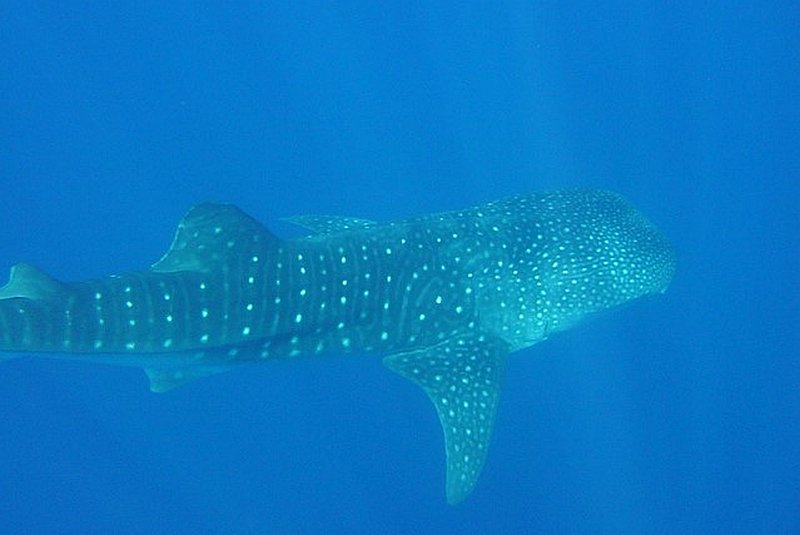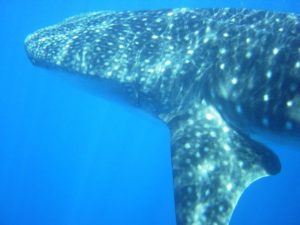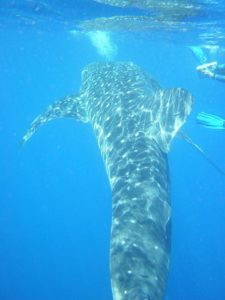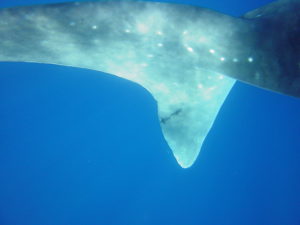Whale sharks in the Fiji Islands (Rhincodon typus)
The whale shark inhabits all tropical and temperate oceans. It lives pelagic in the open seas, usually in the upper water column where plankton is plentiful.
It is a slow-moving filter-feeding shark and the largest known fish. The largest confirmed individuals were over 18 meters in length.

Whale sharks pose no significant danger to humans as they are usually docile, slow-moving fish. But young whale sharks are known to be curious and inquisitive, they may approach drifting boats or snorkelers.
Known feeding and congregation locations include sites at Ningaloo Reef, Maldives, Lakshadweep, Philippines, Yucatan, Mozambique…
Whale shark sightings in Fiji are usually random encounters since there are no known sites where they congregate.
Whale sharks are difficult to spot from a boat as they seldom break the water surface.
Snorkeling with a Whale shark
The whale shark in these photos has been encountered on the return dive trip from Wakaya Lailai to Levuka, about 4 miles off the Wakaya reef in the open sea.
It swam under the surface and the boat went right across it, as we noticed it underneath. The boat did not touch it as we were afraid at first. We stopped the boat and turned the engine off.
 The whale shark came swimming towards the boat. It was a small Whale shark of only about 5 meters.
The whale shark came swimming towards the boat. It was a small Whale shark of only about 5 meters.
We carefully entered the water, and the shark swam right towards me. I could see markings and parasites around its mouth and thought how small its eyes are compared to its size.
 The shark swam right up to us, as if it were curious and wanted to check us out. It came I touched it on its side. Like sandpaper just as all sharks. It was indifferent to the touch, did not react.
The shark swam right up to us, as if it were curious and wanted to check us out. It came I touched it on its side. Like sandpaper just as all sharks. It was indifferent to the touch, did not react.
After the shark stayed a little while, it descended headfirst, straight down into the blue. An outstanding snorkeling adventure.



